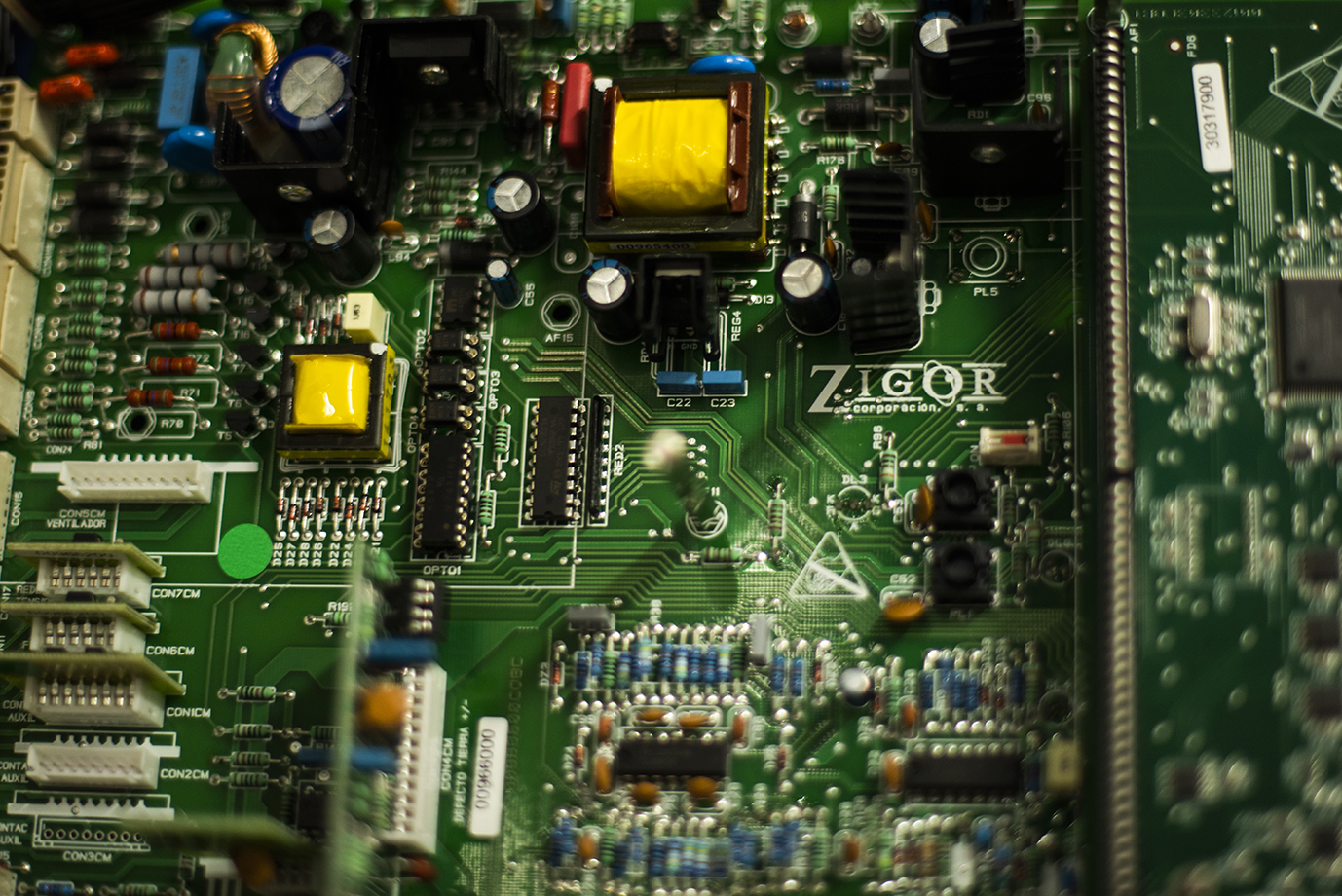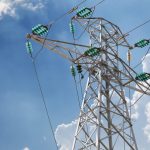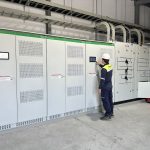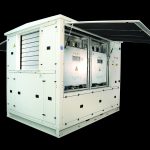Control, power and electronics
Power electronics is an electronic engineering discipline that focuses on the design, control and application of electronic devices and systems for the efficient management of electrical energy.
This discipline is based on three combined pillars that cover its area of knowledge and application: control, power and electronics. Control refers to how the systems of this technology are managed and regulated to maintain a stable state and control their dynamic behavior by adjusting and stabilizing the relevant variables within a closed feedback system to achieve their desired state.
The power relates to the static and dynamic equipment used in the generation, transmission and distribution of energy. This equipment is designed to manage and control electrical energy efficiently and safely throughout the electrical system.

Application of an inverter in the photovoltaic power system
The term electronics refers to devices and devices that are used to process electrical signals to achieve desired objectives in the control of the systems. These devices and circuits are specifically designed to operate in high power applications and are intended to control and regulate the flow of high-power energy power.
The combination of these three terms results in the design of devices such as ZGR’s energy efficient solar inverters. These devices, for example, are designed to convert the DC power generated by PV modules into grid-compatible AC power.

Solar Inverter ZGR SOLAR STR 200 / 250 by ZGR Corporation
Energy efficiency, the axis of power electronics
Power electronics is mainly based on the switching of power semiconductor devices. The evolution of power semiconductor technology has led to a significant improvement in the power control capabilities and switching speed of devices. This development in power electronics has led to an improvement in energy efficiency, as devices have reduced energy losses and improved the efficient use of the resources at their disposal. Of course, improved energy efficiency has contributed to the development of more sustainable energy systems.
On the other hand, the development of microprocessors and microcomputer technology has been vital in the impact on the control and synthesis of the control strategy for power semiconductor devices. Today, power electronics equipment uses power semiconductors as its main component, which could be compared to muscles, while microelectronics provides the power and intelligence equivalent to a brain.
This discipline has an important role in today’s technology and is used in a wide range of high power products such as temperature control systems, lighting, power supplies, motors, vehicle propulsion systems and high voltage direct current (HVDC) systems.
Brief history of power electronics
The introduction of the mercury rectifier in the first decades of the 20th century points to the beginning of the history of power electronics. This rectifier, also called ignitron, was used when intensity control was needed in large industrial and utility installations, where it was necessary to transform a high degree of amperage in ac to dc. These devices were developed until the 1950s, when the first electronic revolution took place with the invention of the silicon transistor.
This invention was the key for the development of many devices and modern electronic technology. In the years that followed, modern microelectronics was also boosted by the development of silicon semiconductors. In 1956, Bell Laboratories developed the silicon controlled rectifier (SCR), which was defined as a thyristor. This device consists of semiconductor elements that produce switching through the use of internal feedback.
The second electronic revolution begins with the development of the commercial thyristor, getting in a new era in power electronics. Since then, different power conversion techniques have been introduced and different classes of semiconductor devices have been developed. The microelectronics revolution has made it possible for us to process gigantic amounts of information incredibly fast. These advances in power electronics have given the discipline the ability to control large amounts of power with increasing efficiency. In the coming decades, power electronics is expected to shape and condition the electricity in the transmission grid between its generation and users.
Power modules: the modular design to improve the robustness and productivity of units
Power devices are available as individual units or in module formulation. Power modules offer advantages such as lower closed-state loss; good high-voltage and high-current switching characteristics as well as higher speed than conventional devices. There are even modules that include better protection against disturbances, as the affected module can be replaced while the rest continue to function, thus improving the productivity and safety of the equipment.
It is no coincidence, then, that companies such as ZGR Corporacion have specialized in the modular design of their products, which provide greater robustness, reliability, productivity and protection to energy projects.

ZGR SOLAR CTRh 3300 1500 V central inverter, with redundant modularity
ZGR SOLAR CTRH 3300 de ZGR is an example of a high-performance modular device designed to optimize in medium and large-scale photovoltaic plants. As it is also redundant, it allows faulty inverters to be replaced while the others continue to operate, thus responding to the growing demand of the large utility-scale sector and becoming one of the focal points of our innovation. Furthermore, to accelerate and implement PV hybridization with battery energy storage, with this inverter, different modules can be diverted to PV production and others to storage. Therefore, it can operate in a bidirectional way, responding to both functionalities.
Advanced power electronics: towards intelligent modules
Smart devices, which are an example of highly advanced power electronics, combine peripheral circuits with power modules. The peripheral circuits combines the input and output section, as well as the interconnection with the signal and high voltage systems. It also includes a protection and diagnostic circuit, which prevents overcurrent, short circuits, overheating and overvoltage, and a control current source.
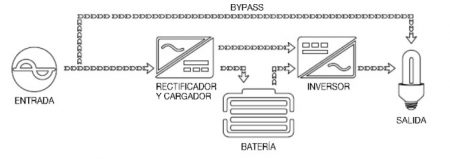
Block diagram of a system used for an interruptible power supply
These intelligent modules are also called “smart power“. The use of these modules is constantly increasing in the discipline of power electronics. Smart power technology can be thought of as a box that connects the power source to any load.
ZGR goal: more robust, quality an sustainable energy
ZGR values the importance of Power Electronics and contributes towards improving the quality and efficiency of the electricity supply. As experts in this technology, as well as the fundamental principles of electrical energy conversion and management, ZGR has the knowledge and experience to develop global and specialized solutions for each project.
In a super-connected and interdependent world, where energy moves everything and marks the advance of progress, ZGR’s persistence in energy efficiency, technological development and constant innovation consolidate its high strategic value in the present, to move towards the future with an uninterrupted, incident-free and safe electricity supply, which allows maximum savings in energy use and with an advanced, robust, modular and hybrid infrastructure, necessary for a free, fair and more competitive model of society. Your energy is our challenge.
Do you have power supply problems? Do you need to ensure the quality of the grid that reaches your units? Do you need solar inverters or do you need to repower service stations to improve the efficiency of your solar plants or convert your petrol station into an electro-power station? Contact us because we can help you.
